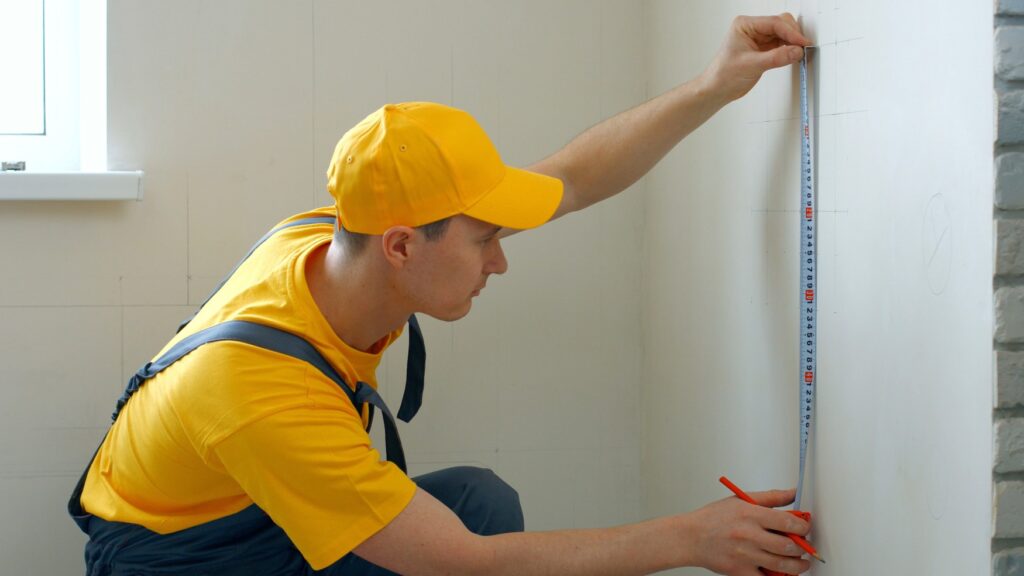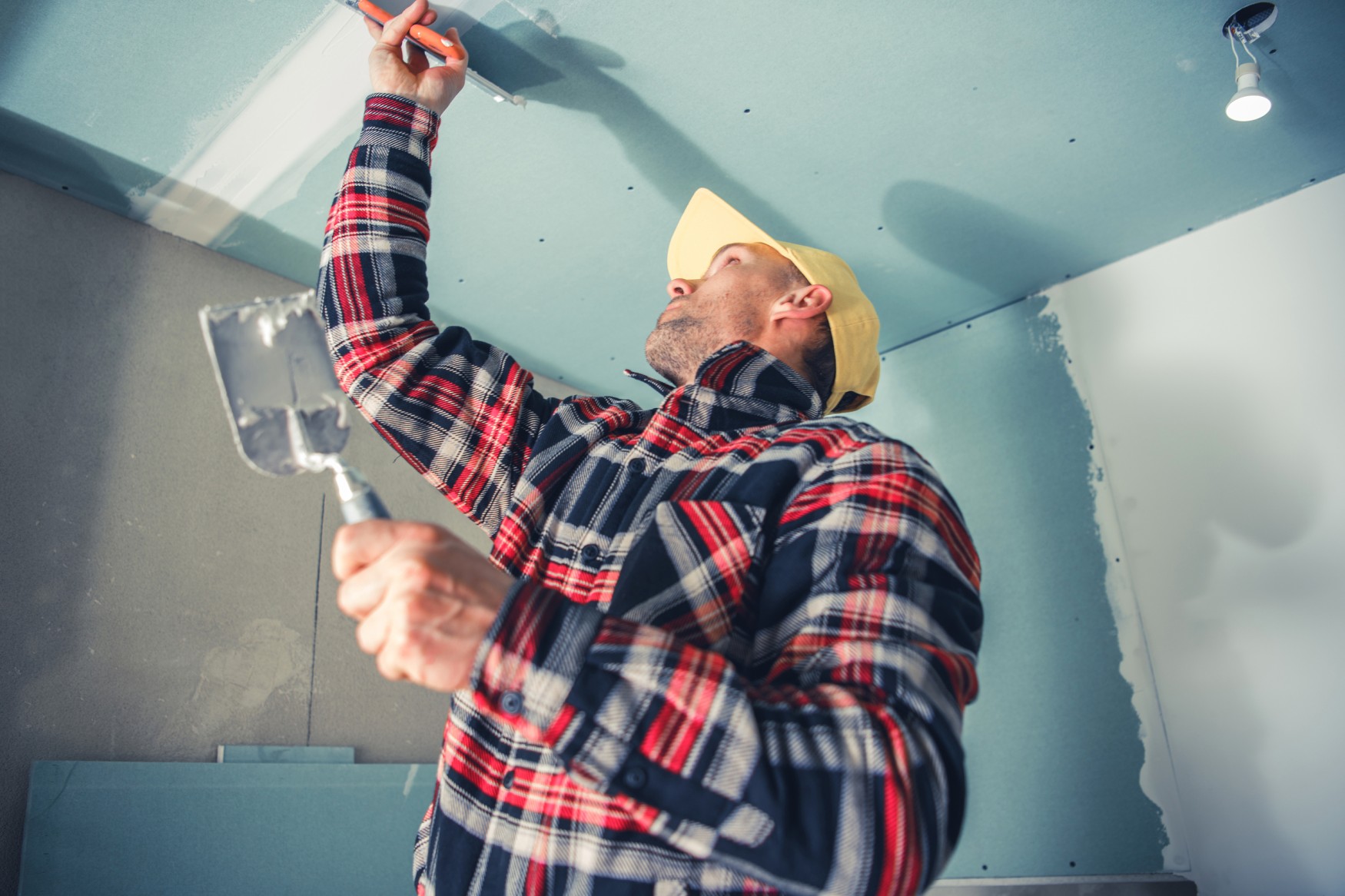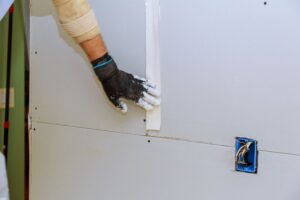It’s the kind of thing you never want to discover—but there it is. That discolored, saggy spot on your wall or ceiling is a dead giveaway. Drywall water damage has made an uninvited appearance in your San Diego home, and now you’re left wondering: Who do I even call to fix this mess?
Whether you’re dealing with a leak from above, a burst pipe, or sneaky moisture buildup, this kind of problem doesn’t just go away on its own. At SGP Drywall, we’ve helped homeowners all over San Diego navigate the maze of drywall leak repair, water-damaged drywall replacement, and full-scale water damage restoration. And we’re here to help you, too.
Let’s break down what you’re dealing with—and, more importantly—who to call to fix it right.
First, How Bad Is the Damage?
Before you start dialing every contractor on your phone, take a moment to assess what you’re working with:
- Is the drywall soft, sagging, or soggy?
- Do you see brown or yellow stains on the ceiling?
- Is there a musty smell nearby?
If you answered yes to any of these, you’ve got a case of water-damaged drywall on your hands—and maybe even mold behind the drywall.
Pro tip: If you’re seeing ceiling water stains, the issue might be more significant than you think. Water travels, and that visible damage might just be the tip of the iceberg.
What to Do Before You Start Making Calls
It’s tempting to rush into repairs, but a little prep work goes a long way. The following steps will guide you in evaluating your drywall water damage and deciding who’s the right pro for the job. Let’s go through them together.
Step 1: Stop the Source
Before you repair the drywall, you’ve got to stop the leak. This could mean calling:
- A plumber (for pipe bursts or leaks)
- A roofer (for water seeping in through shingles or flashing)
- An HVAC tech (if your AC unit is dripping condensation into your ceiling)
Fixing the drywall without fixing the leak is like putting a Band-Aid on a leaky faucet. It’s not going to cut it.
Step 2: Call a Water Damage Restoration Company (Maybe)
If the water damage is widespread or you suspect drywall moisture issues, your next call should be to a water damage restoration team. These pros handle:
- Moisture readings and assessments
- Drying out structural components
- Mold inspection and removal
- Wet drywall removal when needed
They’re like the emergency responders of the water-damage world—coming in fast to stop further destruction.
Step 3: Call a Drywall Specialist

Once the area is dry and safe, it’s time to call in the drywall cavalry. Drywall contractors specialize in the following:
- Replacing soggy drywall and ceiling panels
- Matching wall textures and paint
- Taping, sanding, and seamless blending
Whether the job requires a small patch or a full drywall replacement, they make your space look like new again. There’s an art to matching the look of old wallboard or sheetrock in older San Diego homes, and they’ve got the brushstrokes down.
Who NOT to Call First
You might think a handyman or painter can handle it all—but when it comes to drywall water damage, the stakes are higher than just cosmetic fixes. Improper repairs can lead to:
- Mold growth from leftover moisture
- Weak seams and poor structure
- Recurring water damage
Unless your handyman has a background in drywall repair after flooding or water restoration, you’re better off with the pros.
Signs It’s Time to Replace, Not Repair
Sometimes patching isn’t enough. Call for full drywall replacement if:
- The board crumbles to the touch
- The area smells musty, even after drying
- There’s visible mold or mildew
- The same spot has been “repaired” more than once
These signs indicate the integrity of your gypsum board is compromised—and it’s time for a clean slate.
The Cost of Doing Nothing
Still thinking about putting it off? That little water stain can turn into a big, moldy, expensive mess. In San Diego’s relatively mild but humid climate (especially near the coast), moisture left unchecked can:
- Ruin insulation
- Weaken structural supports
- Invite health issues from mold spores
So yeah—drywall water damage isn’t something to ignore.
The San Diego Factor: Why It Matters
San Diego homes are as diverse as the neighborhoods they’re in. From Mission Hills bungalows to La Jolla estates, the construction and materials vary wildly. That’s why local knowledge matters.
A drywall pro in the Midwest might not understand the salt air corrosion near the beach or the way moisture seeps into stucco-clad homes. But a San Diego-based expert like SGP Drywall? We’ve seen it all.
We know how to work with:
- Spanish-style ceilings
- Textured finishes
- Vintage plaster blends
- Mid-century builds
And we’ll treat your home like the architectural gem it is.
Call us today for fast, friendly, and flawless drywall replacement after leaks in San Diego.
FAQs
Can you just paint over the drywall water damage?
You can, but you really, really shouldn’t. Painting over a water stain without addressing the cause (like a leak or lingering moisture) just masks the problem. Worse, it can trap moisture in the wall, making it a breeding ground for mold. If you’re seeing ceiling water stains or yellowish spots, it’s time to inspect, not just cover it up.
How long does drywall take to dry after a leak?
That depends on how wet it gets and how quickly you respond. In mild cases with good ventilation, soggy drywall might dry out in 24–48 hours. But deeper damage, insulation saturation, or poor airflow can stretch that to several days or more. Use fans, dehumidifiers, and when in doubt—call a pro.
Looking for More Answers?
Want to keep learning? Check out our article: Will Electricians Patch Drywall?




